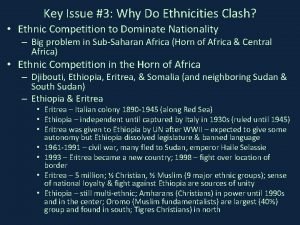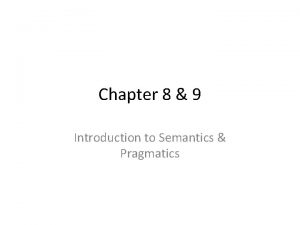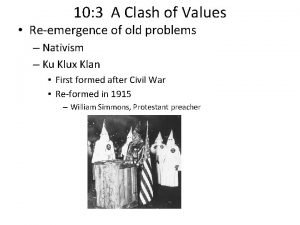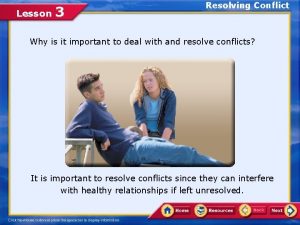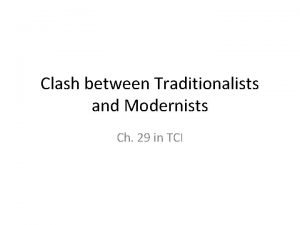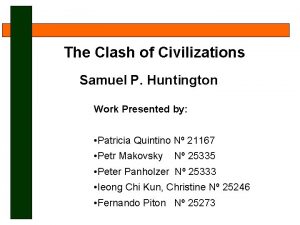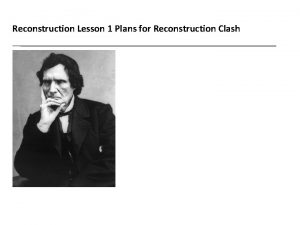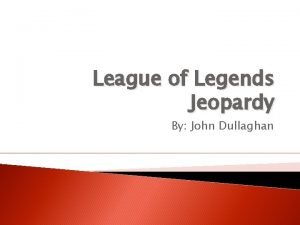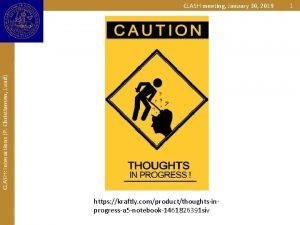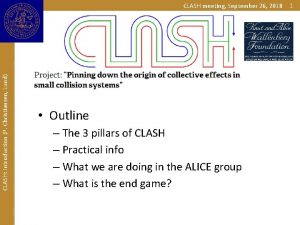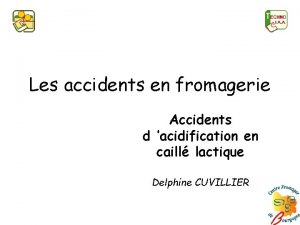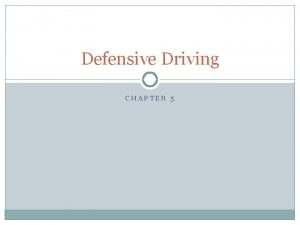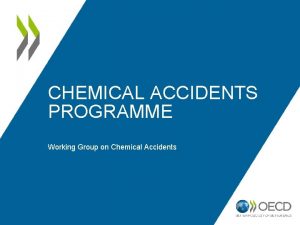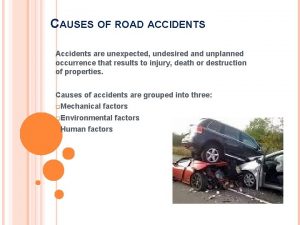Accidents Injuries in International Air Law The Clash


























- Slides: 26

Accidents & Injuries in International Air Law: The Clash of the Titans by Paul Stephen Dempsey Tomlinson Professor of Law Director, Institute of Air & Space Law Mc. Gill University Copyright © 2013 by Paul Stephen Dempsey

Purposes of Warsaw “Convention for the Unification of Certain Rules Relating to International Carriage by Air. ” § Unification of Law… uniform procedure, documentation and regime of substantive law applicable worldwide. § Limit carrier liability so as to foster growth of the nascent commercial airline industry.

LIABLITY CONVENTION RATIFICATIONS § § § § UN Members – 192 States The Chicago Convention – 191 States The Warsaw Convention – 152 States The Hague Protocol – 137 States The Guadalajara Convention – 86 States Montreal Protocol No. 4 – 58 States The Montreal Convention of 1999 – 104 States * As of Nov. 14, 2013

See http: //www. icao. int/cgi/airlaw. pl for an up-to-date listing of High Contracting Parties.

ACCIDENT, INJURY, CAUSATION & LOCATION § The Montreal Convention of 1999 made no significant change to Article 17 of the Warsaw Convention: § “The carrier shall be liable for damage sustained in the event of the death or wounding of a passenger or any other bodily injury suffered by a passenger, if the accident which caused the damage so sustained took place on board the aircraft or in the course of any of the operations of embarking or disembarking. ”

ACCIDENT, INJURY, CAUSATION & LOCATION § The Montreal Convention of 1999 made no significant change to Article 17 of the Warsaw Convention: § “The carrier shall be liable for damage sustained in the event of the death or wounding of a passenger or any other bodily injury suffered by a passenger, if the accident which caused the damage so sustained took place on board the aircraft or in the course of any of the operations of embarking or disembarking. ”

Issues arising under Article 17 § What kind of "accident" must have occurred? § What types of injuries are contemplated by the term "damage sustained in the event of death or bodily injury"?

What constitutes an “accident”?

Air France v. Saks § Facts: a passenger lost her hearing in one ear after a routine depressurization of an Air France aircraft landing normally at Los Angeles. § The definition of an accident under Article 17 should be flexibly applied after assessing all the circumstances surrounding the passenger's injuries; § The “event or happening” that caused the passenger's injury must be abnormal, "unexpected or unusual"; § The event must be "external to the passenger", and not the passenger's own "internal reaction" to normal flight operations; and § Where the evidence is contradictory, the trier of fact must determine whether an accident, so defined, has occurred. § in Saks, the U. S. Supreme Court noted that liability extends under Article 17 "only if a passenger's injury is caused by an unexpected or unusual event or happening that is external to the passenger. . . "

Deep Vein Thrombosis and Air Travel Group Litigation, The Master of Rolls of England’s Court of Appeal concluded, “I cannot see, however, how inaction itself can ever properly be described as an accident. It is not an event; it is a non-event. Inaction is the antithesis of an accident. ” Qantas Ltd. v. Povey The appellate division of the Supreme Court of Victoria, Australia concluded that “a failure to do something. . . cannot be characterized as an event or happening. . ” The court went on to opine that a pilot’s failure to drop the landing gear would not constitute an Article 17 accident, but the resulting crash of the aircraft would.

Olympic Airways v. Husain § Recovery allowed for the death of an asthma-suffering passenger exposed to second-hand smoke. § The refusal of a flight attendant to assist a passenger who requested assistance constituted “an unexpected or unusual event or happening” under Saks. § Both the passenger’s exposure to the second-hand smoke, and the refusal of the flight attendant to assist the passenger, contributed to Husain’s death. § Inaction can be an accident irrespective of the conclusions of intermediate appellate courts in England Australia.

The Australian High Court in Povey v. Qantas Airways § Mc. Hugh: “With great respect for the U. S. Supreme Court. . . the Saks definition of “accident” does not exhaustively define the scope of Art. 17. . In Saks, it would have made no sense for the Court to describe the operation of the pressurization as “a happening that is not. . . intended. ” The system operated independently of any actor who could have formed an intention to do an act that had consequences that were not intended or expected. § “With great respect to the Supreme Court in Saks, it went too far in insisting that the harm-causing occurrence must always be “caused by an unexpected or unusual event or happening that is external to the passenger. ” § “An omission may. . . constitute an ‘accident’ when it is part of or associated with an action or statement. . But a bare omission to do something cannot constitute an accident. ” § Kirby: “In ordinary parlance, the absence of a happening, mishap or event may be an ‘occurrence’. However, depending on the context, it will not usually qualify as an ‘accident’. ” § Callihan: “mere inaction could not constitute an event or an accident. ”

U. K. House of Lords in In re Deep Vein Thrombosis and Air Travel Group Litigation § Scott: “It is not the function of the court in any of the Convention countries to try to produce in language different from that used in the Convention a comprehensive formulation of the conditions which will lead to article 17 liability. The language of the Convention itself must always be the starting point. . [A] judicial formulation of the characteristics of an article 17 accident should not, in my opinion, ever be treated as a substitute for the language used in the Convention. § “I venture. . . to express my respectful disagreement with an approach to interpretation of the Convention that interprets not the language of the Convention but instead the language of the leading judgment interpreting the Convention. This approach tends, I believe, to distort the essential purpose of the judicial interpretation, namely, to consider what “accident” in Article 17 means and whether the facts of the case in hand can constitute an article 17 accident. ”

§ Hence, the U. S. Supreme Court’s reliance on the Saks’ definition of “accident” in Husain constituted flawed jurisprudential methodology. Instead of asking whether the inaction of a flight attendant was an “unusual or unexpected event of happening external to the passenger”, the Court instead should have asked whether the flight attendant’s inaction was an “accident. ” § Lord Scott observed that two requirements identified in Saks – that an event that is no more than the normal operation of the aircraft in normal conditions is not an “accident”, and that to be an accident, the event that caused the damage must be external to the passenger – ruled out recovery for DVT.

DVT and PTSD § § § Neither DVT nor PTSD cases have fared well in the courts, but on sharply different grounds. In DVT cases, airlines have prevailed because there was no “accident”. In PTSD cases, airlines have prevailed where there was no physical injury. But note the sharp divisions between the analytical approaches of the highest courts in the United States, the United Kingdom and Australia. The U. S. courts ask whether an injury occurring on board a flight constitutes an “unusual or unexpected event or happening external to the passenger. ” The U. K. and Australian Courts ask whether the injury was caused by an “accident. ” While the U. S. Supreme Court concludes that inaction can constitute an “unexpected event or happening”, the U. K. and Australian courts conclude that inaction cannot constitute an “accident. ” These are great ships passing in a foggy night, hearing only their horns blowing in the distance, warning of potential collision.

What constitutes “bodily injury”?

Emotional Damages § The issue of whether emotional damages are recoverable has long troubled common law courts. The jurisprudence on this issue reflects several major concerns: (1) that emotional harm can be feigned, or imagined; and (2) some harm is the price we pay for living in an industrial society; (3) emotional damages are difficult to measure; and (4) unconstrained liability could impede industrial and economic growth. § Turning now to Private International Air Law, courts that have examined the travaux preparatiores of the Warsaw Convention of 1929 have concluded that there was no discussion of whether recovery for emotional damages was contemplated by its drafters. They also have concluded that recovery for emotional damages was not permitted by most civil or common law jurisdictions prior to 1929.

Eastern Airlines v. Floyd § Several passengers claimed to have suffered mental distress when their aircraft, bound for the Bahamas, lost power in all three engines and began a sharp and terrifying descent. The flight crew informed the passengers that it would be necessary to ditch the plane in the ocean. Almost miraculously, the pilots managed to restart the engines and land the jet safely back at Miami International Airport. § The U. S. Supreme Court held that Article 17 does not allow recovery for purely mental injuries. This conclusion was based on the French translation (interpreting "lesion corporelle" to mean "bodily injury"), and on the primary purpose of the Warsaw Convention -- limiting liability in order to foster growth of the infant airline industry. Writing for the majority, Justice Marshall concluded: § “The narrower reading of 'lesion corporelle' also is consistent with the primary purpose of the contracting parties to the Convention: limiting the liability of air carriers in order to foster the growth of the fledgling commercial aviation industry. . Whatever may be the current view among Convention signatories, in 1929 the parties were more concerned with protecting air carriers and fostering a new industry than providing full recovery to injured passengers, and we read 'lesion corporelle' in a way that respects that legislative choice. ”

Emotional Injury: The Alternatives: • • No recovery allowed for emotional distress; Recovery allowed for all emotional distress, so long as bodily injury occurs; Emotional distress allowed as damages for bodily injury, but distress may include distress about the accident; and • Only emotional distress flowing from the bodily injury is recoverable. Jack v. Trans World Airlines, Inc. , 854 F. Supp. 654 (N. D. Cal. 1994) embraced the fourth alternative, and has been widely followed

§ The explicit imprecision and ambivalence of the Supreme Court’s dictum in Floyd -- “we express no view as to whether passengers can recover for mental injuries that are accompanied by physical injuries” -- left the door ajar for all sorts of litigation. § For example, to recover under Article 17, need the emotional injury result from the physical harm, or may the physical harm result from the emotional injury? In other words, may the physical injury simply be the physical manifestation of emotional harm (e. g. , what if plaintiff was not physically touched, but suffered hives, diarrhea, or hair loss because of her fright), or must there instead be some direct physical contact which produces a bruise, lesion, or broken bones causing emotional harm?

The House of Lords in Morris v. KLM § While agreeing that pain caused by physical injury is recoverable, also Lord Steyn, “would hold that if a relevant accident causes mental injury or illness which in turn causes adverse physical symptoms, such as strokes, miscarriages or peptic ulcers, the threshold requirement of bodily injury is satisfied. ” § The issue was whether a 16 -year old girl could recover for the clinical depression she suffered after being fondled by another passenger aboard a flight from Kuala Lumpur-Amsterdam. Lord Nicholls wrote, “The expression ‘bodily injury’ or ‘lesion corporelle’, in article 17 means, simply, injury to the passenger’s body. ” However, he observed that the brain too, is part of the body, and sometimes subject to injury; the question as to whether the brain has suffered an injury is a question of medical evidence. § The inference is that when medical science has advanced to the level that it can point to an injury in the brain causing clinical depression, then such damages may be recoverable. § Though Lord Steyn concluded that Article 17 does not allow one to recovery for emotional damages absent physical injury, he would allow recovery under two circumstances: (1) pain and suffering resulting from physical injury; and (2) in cases where there is physical manifestation of emotional harm: “if a relevant accident causes mental injury or illness which in turn causes adverse physical symptoms, such as strokes, miscarriages or peptic ulcers, the threshold requirement of bodily injury under the Convention is satisfied. ”

Accident Causes: Bodily Injury that causes: Emotional Harm Bodily Injury

§ § § In an exhaustive review of the negotiating history of the question of potential recovery of emotional damages in the Montreal Convention, the court concluded that there was no consensus or common understanding among the delegates on the issue of whether, and under what circumstances, recovery should be allowed for mental damages. The U. S. delegate at the conference erroneously asserted that the state of Article 17 jurisprudence in U. S. courts at the time allowed recovery for mental injuries even when such injuries were not caused by physical injuries, and sought to include legislative history to the effect that M 99 was not intended to disturb that jurisprudence. The court held that those views were wrong, and that prevailing American jurisprudence required that, to recover for emotional damages, those emotional damages must have been caused by physical injury. Three U. S. Circuit Courts of Appeals in Terrafranca, Lloyd, and Carmeu have held that physical manifestation of emotional harm is not recoverable under Article 17, while the U. K. House of Lords in Morris v. KLM concluded that they were. Though the U. S. Supreme Court has not yet had occasion to rule on the issue, the stage is set for jurisprudential confrontation yet again between the Titans of Law. US Court of Appeals in Ehrlich v. American Airlines

CONCLUSION § Issues of what constitutes an “accident” and under what circumstances emotional damages are recoverable under Article 17 have proceeded under different jurisprudential paths in the U. S. , U. K. and Australia. § That the highest courts in all three of these influential jurisdictions have disagreed so fundamentally, is troubling. § This Clash of the Titans does not square well with a Convention intended for the Unification of Certain Rules for International Carriage by Air.


www. iasl. mcgill. ca www. mcgill. ca/iasl/ 欢迎访问我们的网站
 Chapter 14:1 using body mechanics
Chapter 14:1 using body mechanics Chapter 13:2 preventing accidents and injuries
Chapter 13:2 preventing accidents and injuries Pt tanah air sentosa
Pt tanah air sentosa Newton's first law and second law and third law
Newton's first law and second law and third law Newton's first law and second law and third law
Newton's first law and second law and third law Boyles law
Boyles law Charles law constant
Charles law constant Why do ethnicities clash
Why do ethnicities clash It is the struggle between opposing forces
It is the struggle between opposing forces Clash royale clan manager
Clash royale clan manager Semantic clash
Semantic clash Chapter 5 section 3 central european monarchs clash
Chapter 5 section 3 central european monarchs clash Clash of lights 10
Clash of lights 10 Red hot root words
Red hot root words Lesson 3 a clash of values
Lesson 3 a clash of values Scopes trial political cartoon
Scopes trial political cartoon Chapter 29 the clash between traditionalism and modernism
Chapter 29 the clash between traditionalism and modernism Chapter 21 section 3 central european monarchs clash
Chapter 21 section 3 central european monarchs clash X bogen clash of clans
X bogen clash of clans How they clang and clash and roar
How they clang and clash and roar Chapter 5 a clash of cultures
Chapter 5 a clash of cultures Why did johnson and congress clash over reconstruction
Why did johnson and congress clash over reconstruction Clash of civilizations huntington
Clash of civilizations huntington Clash of civilizations huntington
Clash of civilizations huntington Lesson 1 planning reconstruction
Lesson 1 planning reconstruction League of legends jeopardy 2020
League of legends jeopardy 2020 Hku computer
Hku computer







